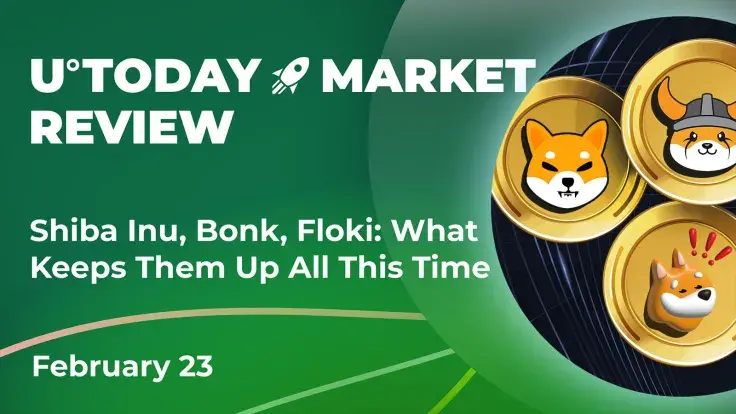
Disclaimer: The opinions expressed by our writers are their own and do not represent the views of U.Today. The financial and market information provided on U.Today is intended for informational purposes only. U.Today is not liable for any financial losses incurred while trading cryptocurrencies. Conduct your own research by contacting financial experts before making any investment decisions. We believe that all content is accurate as of the date of publication, but certain offers mentioned may no longer be available.
Meme currencies Shiba Inu, Floki and Bonk are currently rallying on the cryptocurrency market. While Shiba Inu (SHIB) has experienced stagnation in terms of market performance, investors have begun to move their assets toward SHIB and Dogecoin (DOGE) alternatives, resulting in the recent success of Floki (FLOKI) and Bonk.
Floki (FLOKI) is considered the people's cryptocurrency and the utility token of the Floki ecosystem. The cryptocurrency was birthed by fans and members of the Shiba Inu (SHIB) community and inspired by Elon Musk's Shiba Inu. As a result, it has become increasingly popular among investors, leading to its current rally on the market.
Similarly, Bonk, the first dog-themed coin on Solana, has gained traction among the crypto community. According to the one-pager, BONK has been designed as a community token, with 50% of the total supply airdropped to the Solana community.
With a further rise of risk tolerance in the market, we are more likely to see ascending tendencies in the aforementioned meme assets. However, investors should stay cautious, as each one of them is extremely volatile.
Is Ethereum really ultra-sound?
Ethereum has been experiencing a rise in price performance lately, gaining over 4% in the last 24 hours. One of the factors behind this rise is the effective work of the burn mechanism. It has led to the complete removal of 34,000 ETH from circulation, which is a significant amount.
Thanks to the high burn rate, the selling pressure on the asset is continuously easing. This is a positive scenario for Ethereum and its investors, as it helps to create a more sustainable ecosystem by reducing the overall supply. With fewer tokens in circulation, the value of each token should theoretically increase as demand remains constant or increases.
One scenario in which the burn rate helps Ethereum is in terms of its long-term sustainability. The constant removal of tokens from circulation helps to reduce the overall supply of ETH, making it more scarce and valuable. This should drive up demand for the asset, leading to higher prices and a more stable ecosystem.
However, there is also a scenario in which the burn rate does not help Ethereum. If the burn rate is too high and causes a significant reduction in the overall supply of ETH, this could lead to a lack of liquidity on the market. This could make it more difficult for investors and users to buy and sell ETH, which could harm the overall ecosystem.
Crypto's hidden risk factor
The U.S. dollar index, also known as the DXY index, is a weighted average of six major currencies against the U.S. dollar. These currencies include the euro, yen, pound sterling, Canadian dollar, Swedish krona and Swiss franc. The index is used as a gauge of the U.S. dollar's overall strength or weakness against its major counterparts.
Recently, the DXY index has been moving closer to its 200-day moving average, which is a key level on the chart and acts as a daily resistance level. If the DXY index manages to break above this level, it could lead to a significant rally in the U.S. dollar, which in turn might put some strong pressure on the cryptocurrency market.
The U.S. dollar has traditionally been seen as a safe-haven asset, and in times of economic uncertainty, investors tend to flock to it. This can cause other asset classes, such as cryptocurrencies, to lose value as investors move their money out of riskier investments and into safer ones.


 Godfrey Benjamin
Godfrey Benjamin Tomiwabold Olajide
Tomiwabold Olajide Dan Burgin
Dan Burgin Arman Shirinyan
Arman Shirinyan Caroline Amosun
Caroline Amosun